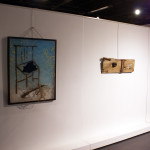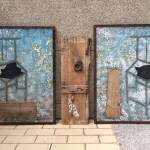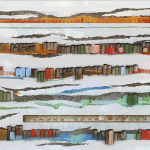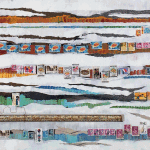In this project, I attempted to capture my impressions on deserted villages located on outlying islands and some rural areas in the New Territories.
Although my research interest Wabi-Sabi is originally a Japanese aesthetic concept, I seek inspirations of Wabi-Sabi in HK rather than relying on my travelling experiences in Japan, since I believe that Wabi-Sabi is universal.
During my past visits to those deserted villages, I discovered something unseen, mysterious, tranquil, and isolated…but nonetheless touched me in a peculiar way.
Supposed these villages were inhabited by people of the old generations, we don’t know when the inhabitants left. But in some of those abandoned houses, traces of accommodation including a few pieces of discarded furniture, housewares and kitchenware could be found. It seems that the past residents left their homes all of sudden? Or, maybe, they have accommodated strangers after being abandoned by their owners?
Despite their rustic appearance, I felt that these houses had been full of families’ stories and domestic warmth in the old days. In solitude, I contemplated on the broken paper, rattan, bamboo, wood, soil, straws, and other naturally aged objects remaining in the houses, as the testimony to a time gone by.
I particularly liked the windows. Some still had broken glass and rusting iron frames mounted on them. However, when I gazed at the window, it reminded me of parents looking through the windows while missing their children who had emigrated or moved to the city ages ago. Witnessing how people change and how impermanent things are, I was overwhelmed by a spine-chilling sensation of Wabi-Sabi.
Similar to the truth, wabi-sabi is, indeed, everywhere.








